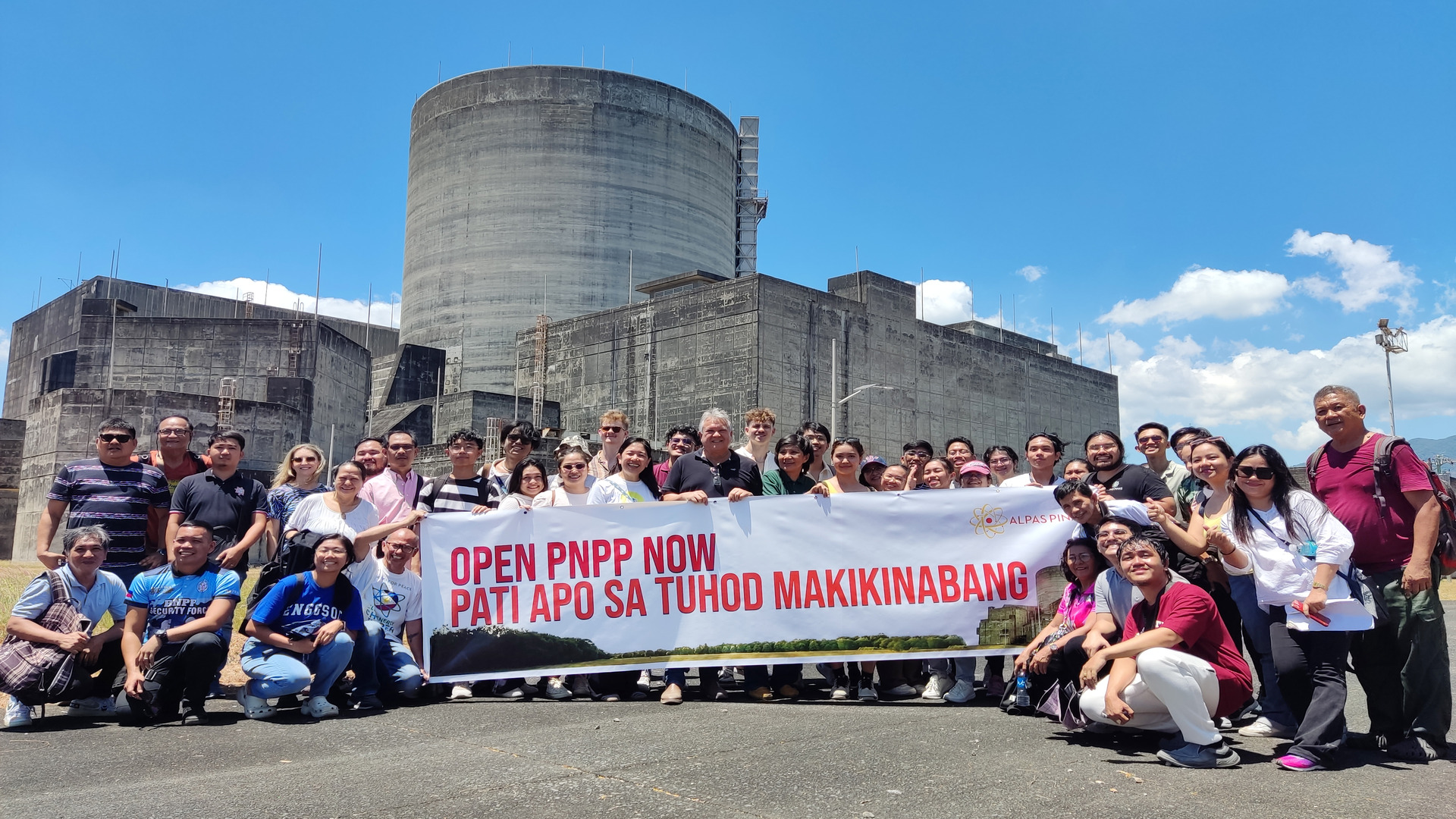Alpas Pinas, a non-stock, non-profit organization leading the advocacy for nuclear energy as a clean energy source, emphasizes the urgency of exploring the activation of the Philippine Nuclear Power Plant (PNPP) considering the country’s low power reserves.
With the Philippines facing low power reserve margin, there is a pressing need to augment the country’s power supply to meet the growing demand. Alpas Pinas sees the activation of the PNPP as a strategic solution to bolstering the country’s power reserves and ensuring a stable and reliable power supply.
Gayle Certeza, convenor of Alpas Pinas, stated, “We believe that adding nuclear energy into our country’s energy mix has the potential to help address our power challenges. Nuclear is the cleanest, cheapest, and most efficient means of producing electricity. It can provide a long-term solution to increasing electricity rates, allowing Filipino families to save more. It will also help ensure more energy abundant, environmentally protected, and a bright future for every Filipino.”
The PNPP, built in the 1970s in response to the 1973 oil crisis, remains a promising asset with an electrical capacity of 620 MW, which could significantly contribute to increasing the country’s power reserves. Despite never being commissioned due to various considerations, an International Atomic Energy Agency (IAEA) report in 2008 affirmed its feasibility for economic operation for 30 years.
Congressman Mark O. Cojuangco, an advocate for nuclear energy and recipient of the American Nuclear Society (ANS) Distinguished Public Service Award, highlighted the structural quality of PNPP, stating, “When revived, we believe it can outlast decades of operation while helping Filipinos enjoy cheaper, cleaner, and more reliable energy source.”
While organizations are exploring new power facilities driven by liquefied natural gas (LNG) to reduce electricity costs, it’s important to consider the potential drawbacks. In fact, the Institute for Energy Economics and Financial Analysis (IEEFA) warns that LNG can significantly increase energy prices.
For instance, since January 2021, the average monthly price of coal, at $8.39 per million British thermal unit (MMBtu), is nearly three times lower than the average JKM (Japan/Korea Marker) LNG price of $22.79/MMBtu. This price disparity translates to higher costs for consumers. IEEFA estimates that LNG costs of $15/MMBtu could translate to a final generation price of nearly eight pesos per kilowatt-hour (kWh) for Filipino consumers. Moreover, LNG’s environmental impact is a concern. It is composed mainly of methane, a greenhouse gas significantly more potent than carbon dioxide, trapping 80 times more heat in the short term and 30 times more in the long run.
The Department of Energy (DOE) is also considering plans to explore building a new nuclear plant using small modular reactor (SMR) technology, while President Ferdinand Marcos Jr. expressed the need to re-evaluate the country’s nuclear power strategy.
“I believe that it is time also to reexamine our strategy towards building nuclear power plants in the Philippines,” President Marcos stated in his first State of the Nation Address (SONA).
In Congress, the Philippine National Nuclear Energy Safety Act, also known as the PhilATOM Bill, is now approved by the House of Representatives. This bill aims to create the Philippine Atomic Energy Regulatory Authority (PhilATOM) and establish a legal framework for the safe utilization of nuclear power in the country. The passage of this bill would provide a crucial regulatory framework for the development and operation of nuclear power plants in the Philippines.
Alpas Pinas sees these developments as an opportunity to explore and learn more about nuclear energy, emphasizing its value as a long-term solution for the country’s energy needs.



